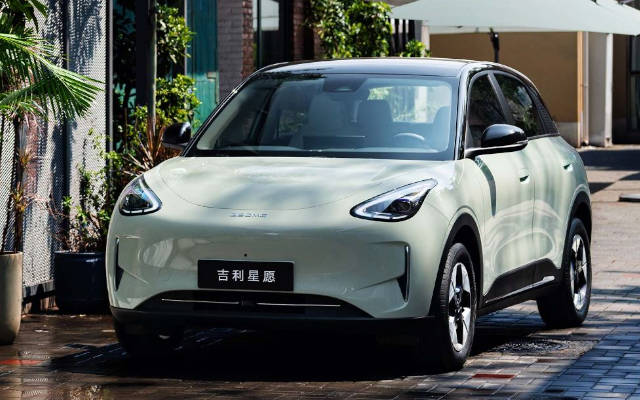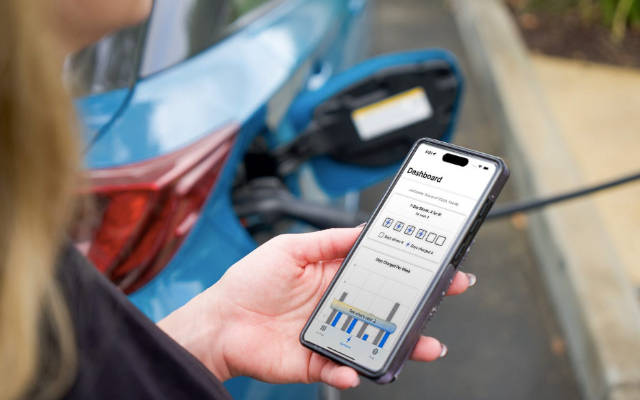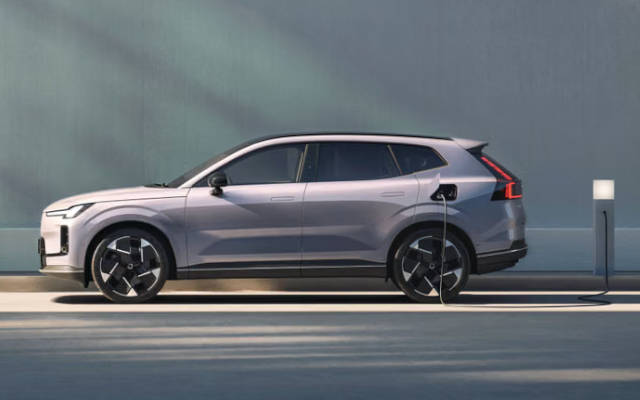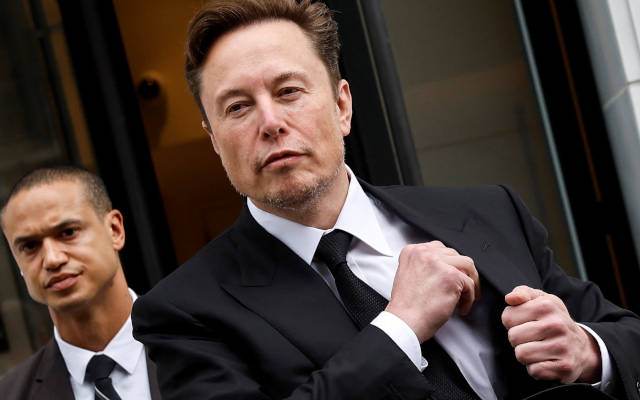 EDITOR'S PICK
EDITOR'S PICK
The EV You've Never Heard Of That Outsold Tesla
18 Sep 2025 | Synopsis
 Geely's Geome Xingyuan, a compact EV hatchback priced under $10,000, became China's top-selling car in H1 2025, outselling Tesla's Model Y and BYD's Seagull. Its name means "Prosperous origin," fitting for a vehicle reshaping mass-market electrification. With 204,940 units sold, the Xingyuan thrives on affordability, urban design, and domestic loyalty. Though unknown in the West, it signals China's growing influence in global EV strategy and the rise of scalable, low-cost platforms.
Geely's Geome Xingyuan, a compact EV hatchback priced under $10,000, became China's top-selling car in H1 2025, outselling Tesla's Model Y and BYD's Seagull. Its name means "Prosperous origin," fitting for a vehicle reshaping mass-market electrification. With 204,940 units sold, the Xingyuan thrives on affordability, urban design, and domestic loyalty. Though unknown in the West, it signals China's growing influence in global EV strategy and the rise of scalable, low-cost platforms.Toyota Built An App To Hack Plug-In Hybrid Owners' Brains And Make Them Actually Charge Their Cars
17 Sep 2025 | Synopsis
 Toyota developed the ChargeMinder app to encourage plug-in hybrid owners to charge their vehicles more consistently. Using behavioral science techniques like personalized reminders, gamification, and educational quizzes, the app increased user satisfaction and improved charging habits. In Japan, it boosted peak renewable charging by 59%, while U.S. trials saw a 10% rise in charging frequency and a 16-point jump in satisfaction.
Toyota developed the ChargeMinder app to encourage plug-in hybrid owners to charge their vehicles more consistently. Using behavioral science techniques like personalized reminders, gamification, and educational quizzes, the app increased user satisfaction and improved charging habits. In Japan, it boosted peak renewable charging by 59%, while U.S. trials saw a 10% rise in charging frequency and a 16-point jump in satisfaction.Volvo XC70 PHEV: A Battery-First Hybrid That Redefines the Segment
17 Sep 2025 | Synopsis
 Volvo's XC70 PHEV redefines plug-in hybrids with up to 200 km (124 mi) of EV range from a 39.6 kWh NMC battery, plus fast charging and bi-directional power. Its P1–P3 drivetrain pairs a 1.5L turbo engine with dual motors for seamless series-parallel operation. Built on Volvo's SMA platform, it launches first in China, with Europe expected next. The XC70 signals a battery-first strategy bridging hybrid autonomy and full electrification.
Volvo's XC70 PHEV redefines plug-in hybrids with up to 200 km (124 mi) of EV range from a 39.6 kWh NMC battery, plus fast charging and bi-directional power. Its P1–P3 drivetrain pairs a 1.5L turbo engine with dual motors for seamless series-parallel operation. Built on Volvo's SMA platform, it launches first in China, with Europe expected next. The XC70 signals a battery-first strategy bridging hybrid autonomy and full electrification.Where’d the Billion Come From? Musk's Tesla Buy Raises Questions
17 Sep 2025 | Synopsis
 Elon Musk's $1B Tesla stock purchase, made via his personal trust, sparked a surge in share price and raised questions about how the buy was funded. Likely financed through margin loans, derivatives, or asset reallocation, the move increased Musk's net worth by up to $8.6B. The timing aligns with Tesla's proposed $1T compensation plan, suggesting a strategic gesture to boost investor confidence and governance optics.
Elon Musk's $1B Tesla stock purchase, made via his personal trust, sparked a surge in share price and raised questions about how the buy was funded. Likely financed through margin loans, derivatives, or asset reallocation, the move increased Musk's net worth by up to $8.6B. The timing aligns with Tesla's proposed $1T compensation plan, suggesting a strategic gesture to boost investor confidence and governance optics. Extreme H: Hydrogen Racing's Bold New Frontier
17 Sep 2025 | Synopsis
 Extreme H is the world's first hydrogen-powered off-road racing series, debuting in Qiddiya City, Saudi Arabia. Evolving from Extreme E, it features gender-equal teams, zero-emission Pioneer 25 SUVs, and green hydrogen supplied via electrolysis. The rugged desert course tests fuel cell performance on gradients up to 130%. Backed by Saudi Vision 2030, the series aims to prove hydrogen's viability and promote sustainable motorsport innovation.
Extreme H is the world's first hydrogen-powered off-road racing series, debuting in Qiddiya City, Saudi Arabia. Evolving from Extreme E, it features gender-equal teams, zero-emission Pioneer 25 SUVs, and green hydrogen supplied via electrolysis. The rugged desert course tests fuel cell performance on gradients up to 130%. Backed by Saudi Vision 2030, the series aims to prove hydrogen's viability and promote sustainable motorsport innovation.
 EVWorld Exclusive
EVWorld Exclusive
Electric Icons in the Making: Audi Concept C vs. Chevrolet Corvette EV
23 Oct 2025 |  Audi's Concept C previews a refined electric GT built on the mature PPE platform, likely arriving by 2026. Chevrolet's Corvette EV promises supercar performance but faces packaging and thermal challenges. Audi is closer to production; Corvette remains in early development. Both reflect divergent strategies in electrifying legacy sports cars, with Audi emphasizing platform maturity and Chevrolet pursuing brand continuity through engineering innovation.
Audi's Concept C previews a refined electric GT built on the mature PPE platform, likely arriving by 2026. Chevrolet's Corvette EV promises supercar performance but faces packaging and thermal challenges. Audi is closer to production; Corvette remains in early development. Both reflect divergent strategies in electrifying legacy sports cars, with Audi emphasizing platform maturity and Chevrolet pursuing brand continuity through engineering innovation.
Electrification Is Not an Oversimplification
23 Oct 2025 |  Despite critiques that the quest for global electrification is "simplistic", the transition is strategic and necessary. Grid upgrades, battery innovation, and tailored policies make electrification viable. Sodium-ion batteries and recycling reduce material risk. Compared to fossil fuels, electrification offers cleaner, safer, and more resilient systems. Complexity demands better design - not delay.
Despite critiques that the quest for global electrification is "simplistic", the transition is strategic and necessary. Grid upgrades, battery innovation, and tailored policies make electrification viable. Sodium-ion batteries and recycling reduce material risk. Compared to fossil fuels, electrification offers cleaner, safer, and more resilient systems. Complexity demands better design - not delay.
What Is the Real Cost to Replace EV Tires?
23 Oct 2025 |  A recent BGR article overstates EV tire costs and ignores fuel savings, regenerative braking, and tire tech advances. Most EV drivers spend ~$2,100–$2,700 on tires over 100,000 miles - not $3,600. EVs save thousands in fuel and benefit from smoother wear profiles. Brands like Goodyear and Michelin now offer EV-specific tires with longer life and better efficiency. The article lacks context and deserves correction.
A recent BGR article overstates EV tire costs and ignores fuel savings, regenerative braking, and tire tech advances. Most EV drivers spend ~$2,100–$2,700 on tires over 100,000 miles - not $3,600. EVs save thousands in fuel and benefit from smoother wear profiles. Brands like Goodyear and Michelin now offer EV-specific tires with longer life and better efficiency. The article lacks context and deserves correction.
The Battery Divide: Strategic Choices in the Global Race to Electrify Mobility
23 Oct 2025 |  Toyota's "1 EV = 90 hybrids" logic reflects lithium scarcity, but sodium-ion batteries challenge that premise. Sodium offers low-cost, abundant chemistry for short-range EVs, decoupling electrification from lithium dependence. National policy shapes adoption: Europe favors full EVs, the U.S. subsidizes hybrids, and emerging markets seek pragmatic solutions. The battery divide is not just technical - it's strategic, reshaping the future of mobility.
Toyota's "1 EV = 90 hybrids" logic reflects lithium scarcity, but sodium-ion batteries challenge that premise. Sodium offers low-cost, abundant chemistry for short-range EVs, decoupling electrification from lithium dependence. National policy shapes adoption: Europe favors full EVs, the U.S. subsidizes hybrids, and emerging markets seek pragmatic solutions. The battery divide is not just technical - it's strategic, reshaping the future of mobility.
Irizar Expands Electric Bus Lineup with Global Reach and Long-Range Performance
22 Oct 2025 |  Irizar has launched two new electric buses - the ie bus and i3 Normal Floor - with over 450 km range, advanced safety systems, and modular lithium-ion batteries. The Spanish manufacturer has delivered over 1,000 electric buses globally since 2014. The new models are lighter, seat up to 53 passengers, and meet European safety and cybersecurity standards. With deployments in Europe, Latin America, and Oceania, Irizar is positioned as a global leader in zero-emission transit.
Irizar has launched two new electric buses - the ie bus and i3 Normal Floor - with over 450 km range, advanced safety systems, and modular lithium-ion batteries. The Spanish manufacturer has delivered over 1,000 electric buses globally since 2014. The new models are lighter, seat up to 53 passengers, and meet European safety and cybersecurity standards. With deployments in Europe, Latin America, and Oceania, Irizar is positioned as a global leader in zero-emission transit.
SEARCH RSSTREAM
 57 New Postings In Past 24 Hours
57 New Postings In Past 24 Hours
Category:mobility
Region:AsiaPacific
Date:23 Oct 2025
Category:mobility
Region:NoAmerica
Date:23 Oct 2025
Category:finance
Region:NoAmerica
Date:23 Oct 2025
Category:mobility
Region:NoAmerica
Date:23 Oct 2025
Category:mobility
Region:Global
Date:23 Oct 2025
Category:autonomy
Region:NoAmerica
Date:23 Oct 2025
Category:mobility
Region:NoAmerica
Date:23 Oct 2025
Category:mobility
Region:AsiaPacific
Date:23 Oct 2025
Category:mobility
Region:AustralPacific
Date:23 Oct 2025
Category:mobility
Region:NoAmerica
Date:23 Oct 2025
Category:mobility
Region:NoAmerica
Date:23 Oct 2025
Category:mobility
Region:Global
Date:23 Oct 2025
Category:mobility
Region:NoAmerica
Date:23 Oct 2025
Category:review
Region:AsiaPacific
Date:23 Oct 2025
Category:mobility
Region:NoAmerica
Date:23 Oct 2025
Category:finance
Region:NoAmerica
Date:23 Oct 2025
Category:mobility
Region:NoAmerica
Date:23 Oct 2025
Category:mobility
Region:NoAmerica
Date:23 Oct 2025
Category:finance
Region:NoAmerica
Date:23 Oct 2025
Category:finance
Region:NoAmerica
Date:23 Oct 2025
